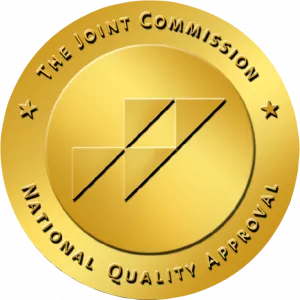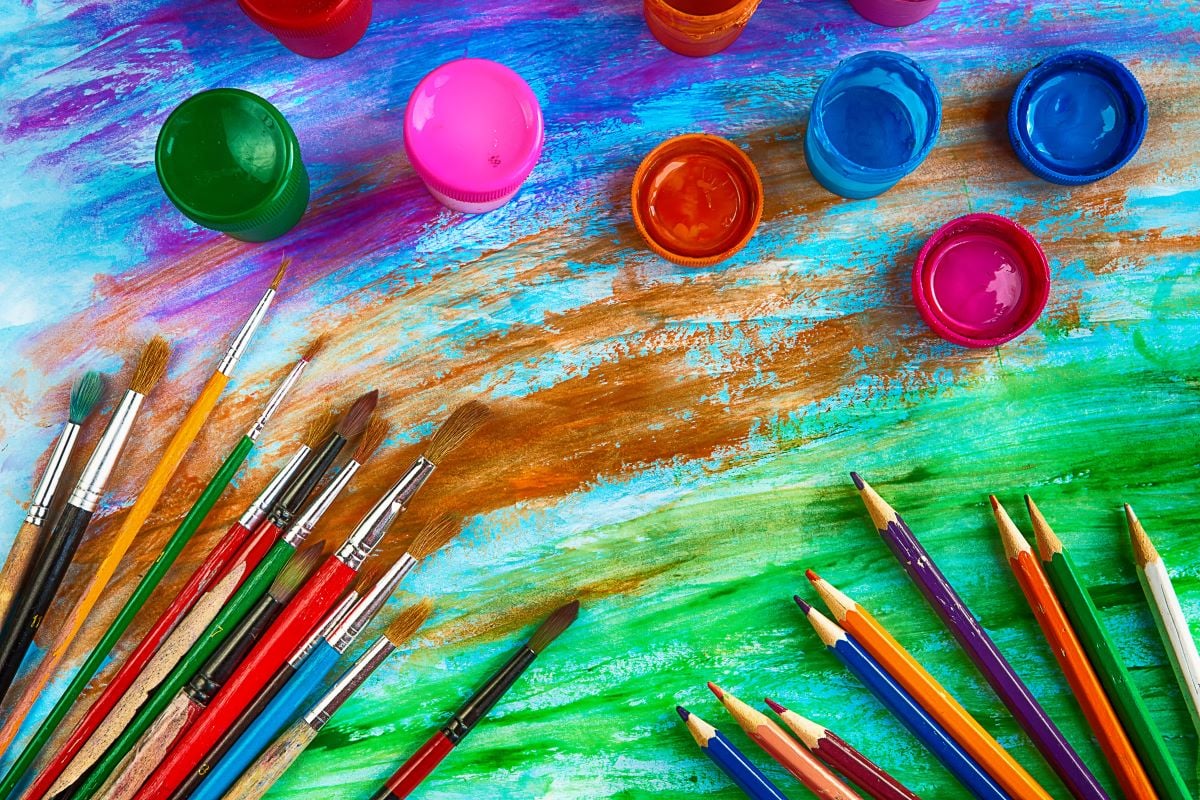In addition to traditional, evidence-based therapy modalities, Avenues alcohol and drug rehab centers offer an array of holistic approaches to addiction treatment. From yoga to art and everything in between, each client can find the modality that speaks to them. A powerful tool in addiction treatment, art therapy transforms the journey to recovery for many clients.
In this article, Avenues Recovery explores art therapy for addiction recovery, including creative art activities used in rehab and the benefits of art in the recovery process.
What is Art Therapy for Addiction Recovery?
Art therapy for addiction recovery is a treatment that uses the power of art to help an addict express and explore their emotions and feelings in a safe and non-judgmental setting.
Art therapy is often considered a complementary and alternative medical (CAM) practice. This means that it is not a standalone treatment for addiction and should be used alongside other therapeutic approaches, such as CBT or a 12-step program.
Creative Expression: Art Therapy as a Tool in Addiction Recovery
For those suffering from addiction, sometimes things are so painful and complicated, with a mix of emotions all present simultaneously, that it is challenging for an individual to articulate what they are feeling effectively. This is compounded by the fact that addicts often feel alienated both from the world at large and from themselves. The American Art Therapy Association explains, “…When people are struggling, facing a challenge, or even a health crisis - their own words or language fail them.”
Art therapy for addiction helps individuals “express themselves in ways beyond words or language,” allowing them to use non-verbal, imaginative, and creative exercises to communicate their thoughts and feelings. For example, a person unable to explain what grief feels like might be able to portray it on a canvas. The art acts as both a stimulus and medium, enabling expression that would otherwise remain impossible.
5 Art Therapy Activities for Recovering Addicts
The following five art activities are often used in the early stages of substance abuse treatment:
- The Crisis Directive: “Depict the crisis or incident that brought you to treatment.” This form of addiction recovery art often portrays how motivated and ready clients are to pursue treatment..
- The Recovery Bridge Drawing: “Complete a bridge depicting where you have been, where you are now, and where you want to be in relation to your recovery.” The Recovery Bridge drawing helps clients explore their journey from addiction to healing. The bridge represents the transition from a troubled past to the present effort to heal, and finally to the future, where the client will reach recovery goals and sobriety. Through a storytelling exercise, this art activity helps a client portray any worries and concerns about the recovery journey, such as relapse.
- The Costs–Benefits Collage: “Make a collage exploring the costs and benefits of staying the same and the costs and benefits of changing.” This permits the client to consider the possibility of not changing and address what it is in their heart of hearts that they really desire - continued use of drugs or a life free from reliance on them. It also allows the client to consider the choices available to an addict once they recover, such as getting married or starting a new job.
- The Year From Now Directive: “Depict yourself as you imagine you will be in a year if you make the changes that support recovery,” and “Depict yourself as you imagine you will be in a year if you do not make the changes.” Similar to the previous task, this art activity allows the addict to explore the idea of divergent futures and possible selves. They can see how substance abuse can interfere with their life goals by leading them to pursue a life of criminality or even meet a fatal end.
- The Barriers to Recovery Directive: “Draw a picture that illustrates the barriers you see to making the changes necessary for recovery.” By drawing possible barriers to their recovery, addicts can consider how to maintain sober living and the various hindrances that may prevent them from doing so.
Keep in mind that art activities for addiction do not require artistic talent. Addiction recovery drawings only entail an open mind and sincerity.
Art Therapy and Substance Abuse
Besides drawings, other art projects can include drawing or painting emotions, stress painting (i.e., painting during times of anxiety and/or stress), and working with other types of media, such as clay.
Art activities for addiction include, but are not limited to, the following:
- Drawing
- Painting
- Sculpture
- Collage
- Poetry
- Art Journaling (combining text with images)
- Mandalas

All of these art projects can be done one-on-one with an art therapist or in a group setting. Other than following the directives, there are no guidelines about what a client can or cannot portray. In either setting, producing the artwork will be followed by a discussion in which the client/s and therapist discuss together what the piece of art depicts and what can be learned from it in a completely non-judgmental way. Artwork also helps the therapist identify challenging areas where the client may need additional work.
Art and Recovery: Symbolism and Metaphor
Symbolism and metaphor are key components of the art therapy process, like in the recovery bridge drawing detailed above. Other examples of symbolism and metaphor employed in art therapy for addiction recovery include:
- The tree of life: In a drawing, painting, or sculpture of the tree of life, the roots, trunk, and branches often represent the past, present, and future. This metaphor helps clients identify life narratives and express their hopes and goals in recovery.
- Mask-making: Clients design masks symbolic of dual identity - the face they show the world versus their hidden self. Mask-making helps clients address the secrecy and protective layers they built during addiction.
- Container design: Clients design a container to hold their cravings and emotions. The container is a metaphor for boundaries and control over addiction and overwhelming feelings.
10 Benefits of Art Therapy in Addiction Recovery
Let’s look at the top 10 benefits of art therapy in addiction recovery:
- Emotional Expression and Processing: Art therapy provides a nonverbal and creative outlet for individuals to express complex emotions, which can be difficult to articulate through words alone. This is especially helpful for people in recovery who have suppressed emotions due to their addiction. Bringing a level of order and structure to one’s internal world allows their external world to become more ordered and structured in turn.
- Stress Reduction: Engaging in artistic activities reduces stress and promotes relaxation. Many individuals turn to drugs as a way to cope with stress, so developing healthier coping mechanisms through art can be instrumental in preventing relapse.
- Self-Exploration and Insight: Art therapy encourages introspection and self-exploration. Through the creative process, individuals may uncover underlying issues that contribute to their addiction. This self-awareness can be a key component of recovery.
- Improved Self-Esteem: Successfully creating art can boost self-esteem and self-confidence. This sense of accomplishment counteracts the feelings of guilt and shame often associated with addiction. In contrast to the destructive behaviors of their addiction, art demonstrates to the individual that they can also build and create something beautiful.
- Distraction and Focus: Engaging in art requires focus and concentration, which can help individuals shift their attention away from cravings or negative thoughts related to addiction.
- Healthy Coping Mechanisms: Learning to channel emotions and stress into artistic expression provides a healthier coping mechanism than turning to drugs. These coping skills can be applied outside of the art therapy sessions.
- Social Interaction: Group art therapy sessions provide an opportunity for social interaction and a sense of belonging. Building positive connections with others in similar situations can be empowering, improve social skills, and foster a supportive community.
- Mindfulness and Present-Moment Awareness: The creative process encourages individuals to be present in the moment, fostering mindfulness. This can help reduce anxiety about the future or regrets about the past, which are common triggers for relapse.
- Empowerment and Agency: Art therapy allows individuals to make choices and take control over their creative process. This sense of agency can translate to other areas of life, allowing the individual to feel that they are behind the steering wheel in their life as opposed to a passive passenger who is being taken along for a ride. They will realize that they are not destined to live a certain way, doomed by fate, but the choice is in their hands as to what their future will look like.
- Identity Reconstruction: Clients explore their values and goals through art, rebuilding a self-identity that doesn’t include addiction.
Find Art Therapy for Addiction Recovery at Avenues
Art therapy for addiction recovery at Avenues is conducted by licensed art therapists, trained in art and psychological theory, who tailor sessions to each person's needs and goals. We believe in complementing traditional treatment modalities with holistic approaches, such as art therapy, equine therapy, and nutrition therapy.
If you or a loved one is struggling with drug or alcohol addiction and think that art therapy could benefit you, don’t hesitate to contact Avenues Recovery, where we can talk you through the various options available. Our team of experienced addiction counselors will work with you every step of the way to ensure you receive the treatment you need to succeed and recover. Get ready to reclaim your life at Avenues.



